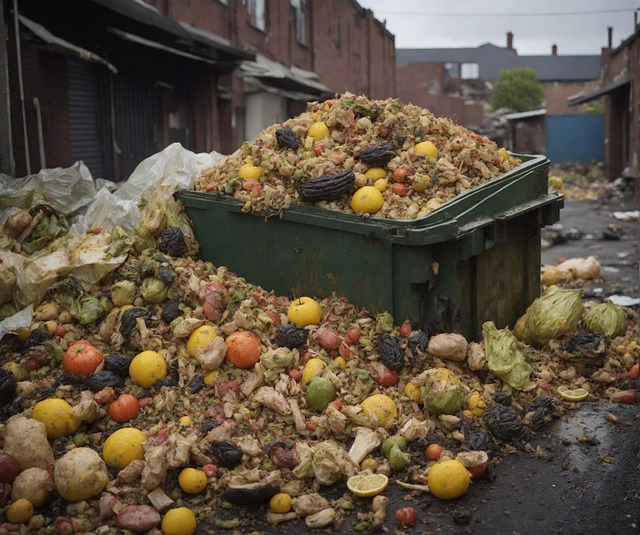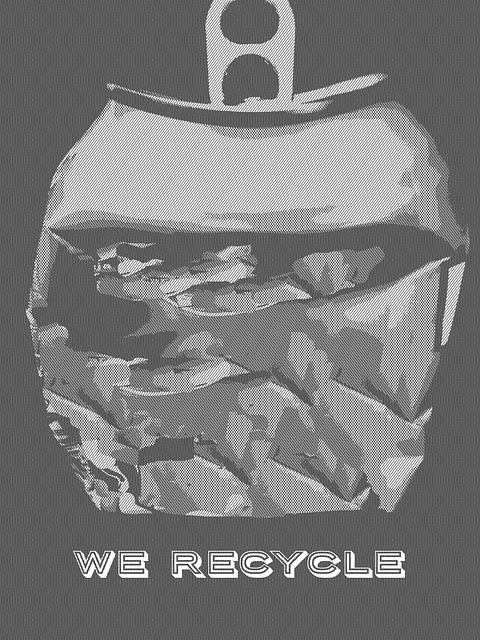Recycle Electronics in Manhattan: Drop-off & Responsible Choices

Manhattan offers multiple convenient locations for electronics recycling, including certified centers for computers, TVs, and smartphones. Initiatives…….
In the bustling metropolis of New York City, specifically within Manhattan, the responsible disposal and recycling of electronic waste (e-waste) has become a pressing yet critical aspect of sustainable urban living. “Where to recycle electronics Manhattan” is not merely a question of convenience but a crucial step towards mitigating environmental impact, preserving resources, and ensuring proper handling of hazardous materials that often accompany outdated or broken electronics. This article aims to provide an extensive exploration of the various avenues and considerations for individuals and businesses seeking to responsibly recycle their electronic devices in Manhattan.
Definition:
Electronics recycling, or e-recycling, is the process of recovering valuable materials from discarded electronic equipment. This includes a wide range of items such as computers, smartphones, televisions, appliances, and various consumer electronics. The primary goal is to reduce electronic waste (e-waste) in landfills and extract reusable components for new products, thereby conserving resources and minimizing environmental pollution.
Significance in Manhattan:
Manhattan, being the economic and cultural hub of New York City, generates a substantial volume of e-waste due to its high population density and fast-paced technology adoption rate. The proper recycling of electronics is essential for several reasons:
Environmental Protection: E-waste contains toxic substances like lead, mercury, cadmium, and brominated flame retardants (BFRs), which can contaminate soil, water bodies, and air if not handled correctly. Manhattan’s recycling efforts help prevent these hazardous materials from entering the environment.
Resource Conservation: Many valuable materials within electronic devices, such as precious metals, rare earth elements, and plastics, can be recovered and reused. Recycling diverts these resources from extraction, reducing energy consumption and environmental impact.
Economic Benefits: Manhattan’s diverse tech industry and its reliance on advanced electronics create a constant demand for recycled materials. Responsible recycling fosters a circular economy, providing opportunities for local businesses and job creation in the e-recycling sector.
The global landscape of electronics recycling has evolved significantly over the past decade, influenced by stringent environmental regulations, technological advancements, and changing consumer behaviors. Manhattan, as a global city, is at the forefront of these trends and plays a vital role in shaping international practices.
International Cooperation: The Basel Convention, a global agreement aimed at controlling the transboundary movement of hazardous waste, has been a cornerstone in regulating electronic waste disposal. Many countries, including the United States, have implemented stringent rules, with Manhattan adhering to local and federal guidelines.
Regional Disparities: Recycling rates and methods vary across regions. Developed nations like the US generally have more advanced e-recycling infrastructure, while developing countries might struggle with improper disposal methods. Manhattan’s robust recycling systems serve as a benchmark for other urban centers worldwide.
Technological Revolution: The rapid pace of technology has led to shorter product lifespans, increasing the volume of e-waste generated globally. Simultaneously, advancements in recycling technologies have improved efficiency and enabled the recovery of more materials. Manhattan’s recycling facilities stay abreast of these innovations, ensuring state-of-the-art processes.
The economic aspects of electronics recycling in Manhattan are multifaceted, involving market trends, investment opportunities, and the broader impact on local economies.
| Economic Factor | Description |
|---|---|
| Market Demand | The global demand for recycled electronic components is driven by the growing need for sustainable manufacturing processes. Manhattan’s tech industry contributes significantly to this demand, creating a stable market for recycled materials. |
| Investment and Jobs | E-recycling facilities attract investments, fostering job growth in the sector. According to recent studies, the US e-waste recycling industry supports over 47,000 jobs and is projected to grow at a CAGR of 12% from 2022 to 2030. Manhattan’s specialized recycling centers play a pivotal role in this expansion. |
| Cost Savings | Businesses that implement proper e-waste recycling programs can reduce costs associated with disposal and potential environmental fines. Effective recycling strategies contribute to long-term sustainability goals, which are increasingly important for corporate reputation and investor appeal. |
| Resource Recovery Value | The economic value of recovered materials is substantial. For instance, the average smartphone contains around $140 worth of valuable metals, and a typical computer can yield over $50 in recyclable components. Manhattan’s recycling initiatives aim to capture this value while minimizing environmental impact. |
Technological breakthroughs have significantly enhanced the efficiency and effectiveness of electronics recycling, enabling more comprehensive recovery of materials.
Automated Sorting Systems: Advanced robotic systems use computer vision and machine learning algorithms to sort electronic components with remarkable accuracy. These systems can identify and separate different types of plastics, metals, and other materials, improving recycling yields.
Waste Extraction Technologies: Innovations in waste extraction techniques allow for the recovery of gases and liquids from e-waste, including valuable resources like rare earth elements. Manhattan’s recycling facilities employ these technologies to extract maximum value from discarded electronics.
Nanotechnology Applications: Nanomaterials are being developed for more efficient separation and purification of metals and other components. These tiny materials have unique properties that enhance the recycling process, potentially leading to higher recovery rates and reduced environmental impact.
The New York State Environmental Conservation Law (ECL) and local regulations govern electronics recycling practices in Manhattan, ensuring compliance with national and international standards.
E-Waste Collection Programs: Manhattan’s Department of Sanitation (DSNY) manages various e-waste collection events and programs, allowing residents to drop off their obsolete electronics responsibly. These initiatives promote public participation in recycling efforts.
Business and Merchant Participation: Local businesses are encouraged to participate in the proper disposal of e-waste generated from their operations. Manhattan’s law requires retailers selling electronic devices to accept old electronics for recycling when customers purchase new ones, known as “e-cycle programs.”
Recycling Facility Licensing: All electronic recycling facilities in New York State must be licensed and meet stringent environmental standards. This ensures that recycling processes are conducted safely and efficiently, with minimal environmental harm.
Despite the numerous benefits of electronics recycling, Manhattan faces several challenges that hinder its full potential:
Inconsistent Public Awareness: Many residents are unaware of proper e-waste disposal methods or the availability of recycling programs. Educating the public about the importance of responsible recycling is essential for increasing participation rates.
Illicit E-Waste Trade: The illegal shipment of electronic waste across borders, often referred to as “e-scrap smuggling,” poses significant risks to environmental and human health. Stricter regulations and international cooperation are needed to combat this issue.
Reconing with Complex Materials: Some electronic devices contain novel materials or unique disposal challenges. For instance, emerging technologies like flexible displays and advanced batteries require specialized recycling methods that Manhattan’s facilities may need to adapt to.
Actionable Solutions:
The NYCERC is a leading facility in Manhattan, dedicated to sustainable electronics recycling. They employ advanced sorting technology and a comprehensive material recovery process. Their success lies in:
One of Manhattan’s prominent tech companies, “TechCorp,” implemented an ambitious e-recycling program as part of their corporate social responsibility efforts. They:
The future of electronics recycling in Manhattan looks promising, with several emerging trends and growth areas shaping its trajectory:
Circular Economy Integration: Manhattan’s recycling efforts will increasingly align with circular economy principles, focusing on product design for recyclability and resource recovery.
Advanced Battery Recycling: With the rise of electric vehicles and renewable energy storage systems, specialized battery recycling facilities will play a crucial role in Manhattan’s e-recycling landscape.
Urban Mining: The concept of urban mining involves extracting valuable materials from end-of-life products within urban areas. Manhattan’s diverse tech sector could contribute to this trend, creating local resource recovery networks.
Public-Private Partnerships: Collaboration between government bodies, recycling facilities, and businesses will drive innovation and enhance the efficiency of e-waste management systems.
The responsible recycling of electronics in Manhattan is a dynamic and evolving process that demands continuous effort, collaboration, and adaptation. As the city navigates the digital age, its commitment to environmental stewardship through effective e-recycling practices remains steadfast. By addressing challenges, embracing technological advancements, and fostering public awareness, Manhattan can serve as a global leader in sustainable electronics management.
Q: Where can I recycle old electronics for free in Manhattan?
A: Manhattan offers various free e-waste recycling options through events organized by the city’s Department of Sanitation and local non-profit organizations. Check their websites or contact 311 for upcoming collection events.
Q: Are my old electronics safely disposed of?
A: Yes, all licensed electronic recycling facilities in New York State must adhere to strict environmental regulations. These facilities are equipped to handle hazardous materials safely and responsibly.
Q: Can I recycle any type of electronic device?
A: Most facilities accept a wide range of electronics, including computers, smartphones, tablets, TVs, and small appliances. However, some specialized items like large home appliances or medical equipment may require specific handling, so check with the recycling center beforehand.
Q: How can I ensure my data is securely erased before recycling?
A: Reputable recycling centers employ secure data erasure methods to protect your privacy. They use specialized software to wipe all data from devices before recycling. Always choose certified and trusted facilities for this service.
Q: What happens to the recycled materials?
A: Recovered materials are either reused in new products, sold to manufacturers worldwide, or processed further to extract valuable metals and raw resources. Manhattan’s recycling efforts contribute to a global network of resource recovery and conservation.

Manhattan offers multiple convenient locations for electronics recycling, including certified centers for computers, TVs, and smartphones. Initiatives…….

Manhattan offers multiple convenient locations for recycling electronics, including dedicated centers in Chelsea and Upper East Side, drop-off points…….

Manhattan offers multiple convenient and responsible e-waste management options, including dedicated recycling centers with advanced technology, free…….

Manhattan residents have numerous convenient options for responsible electronics recycling, including drop-off points at iconic locations and donation…….

Manhattan residents have multiple electronic recycling options, including specialized facilities and collection events for secure data destruction and…….

Manhattan offers multiple eco-friendly options for electronics recycling through specialized centers adhering to environmental standards. Convenient l…….